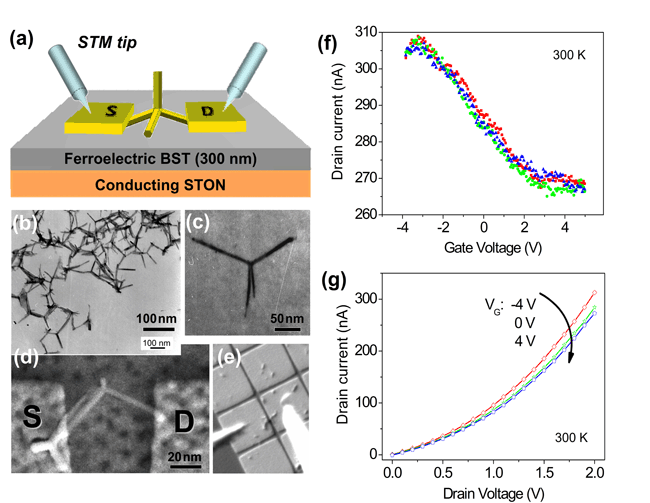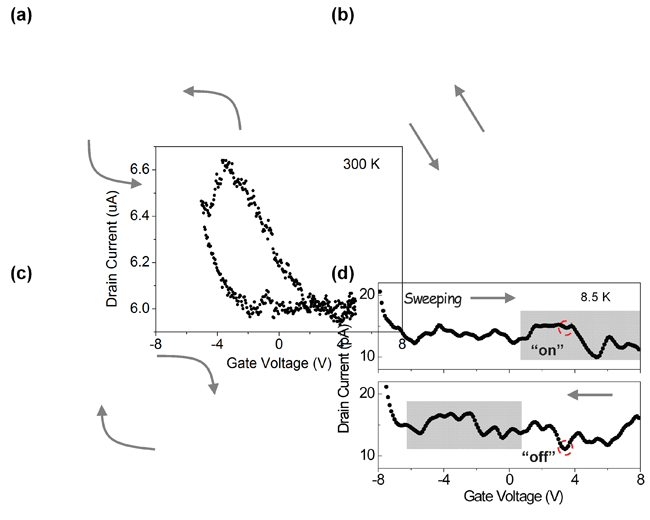Ferroelectric Gated Electrical Transport in CdS Nanotetrapods
Date:22-08-2011 Print
 |
| Figure 1. (a) Schematic illustration of a tetrapod transistor under testing with STM tips. (b) Representative TEM image of the multi-armed CdS nanorods used in this study. The enlarged micrograph of an individual CdS tetrapod is shown in (c). (d) SEM image of a single CdS tetrapod device. The tetrapod here has a fractured arm. (e) in-situ SEM image of two STM tips (in white) probing on a testing device. (f) Typical transfer characteristics of single CdS nanotetrapod device. (g) The current versus source-drain bias voltage curves of the nanotetrapod under gate voltages of -4 V, 0 V, and 4 V. |
 |
| Figure 2. Temperature dependant electrical characteristics of the nanotetrapod device. (a) Typical temperature dependent I-V curves of the nanotetrapod with VG=0 V, measured at 80 K, 140 K, 200 K, 300 K, and 400 K, respectively. (b) The magnitudes of the field effect ((Imax-Imin)/Imax× 100 % at ±4 V) of four different nanotetrapod transistors measured at different temperatures. |
 |
| Figure 3. Typical I-VGtransfer characteristic measured at 300 K (a), 140 K (b), 80 K (c), and 8.5 K (d), respectively (with VSD=2 V for a, b, and c; VSD=50 mV for d). A counter-clockwise hysteresis loop occurs at room temperature (a) due to a charge-storage effect; while a competition between the ferroelectric effect and the charge-storage effect essentially closes the memory window at 140 K (b). At 80 K (c), a clockwise hysteresis loop is opened, indicative of a nonvolatile memory operation. At 8.5 K (d), a ferroelectric-modulated SET behavior is observed. The two red circles represent a bi-stable state. The sharp increase at a gate voltage of -6 V is due to leakage current. |

